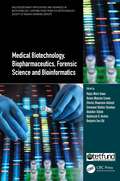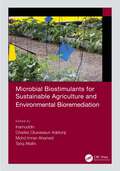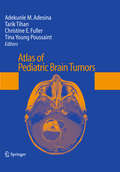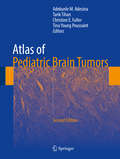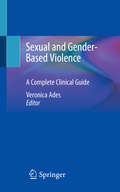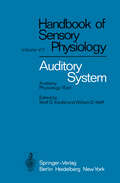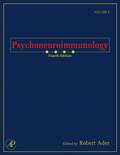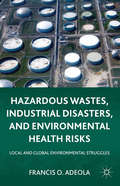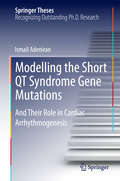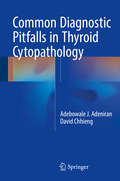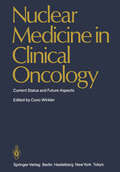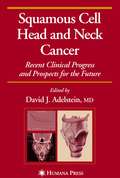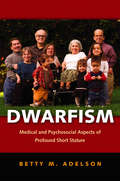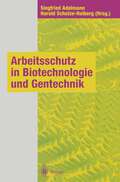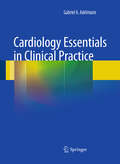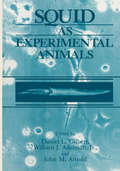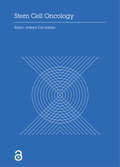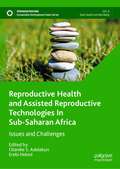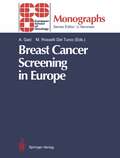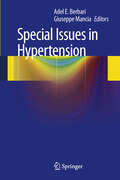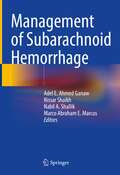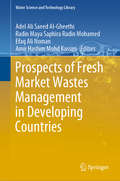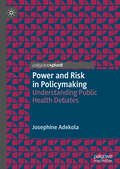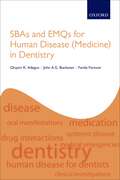- Table View
- List View
Medical Biotechnology, Biopharmaceutics, Forensic Science and Bioinformatics (Multidisciplinary Applications and Advances in Biotechnology)
by Charles Oluwaseun Adetunji Emmanuel Olufemi Ekundayo Abubakar Gidado Abdulrazak B. Ibrahim Benjamin Ewa Ubi Hajiya Mairo Inuwa Ifeoma Maureen EzeonuThis book covers a range of topics on exploiting Nigeria’s mega biodiversity for food security and health; DNA forensic science and its applications; medical biotechnology and biopharmaceutics; medicinal and underutilized plants; impact and mitigation of antibiotic resistance; bioinformatics applications; medical insect biotechnology; etc. The book will be useful reference material for the scientists and researchers working in the fields of nutraceuticals, molecular diagnostics and DNA forensics, biopharmaceuticals and medical biotechnology, nanotechnology, antimicrobials from indigenous plant species, bioinformatics, etc. Emphasizes recent advances in biotechnologies that will help in tackling emerging global health challenges Provides detailed information on how to harness indigenous bioresources including microorganisms and plants for healthcare delivery Introduces new frontiers in the areas of molecular diagnostics and DNA forensic science and bioinformatics with case studies, recent advances in medical insect biotechnology and molecular genetics of pest use towards the exploitation of arthropod midgut components to develop interventions against infectious diseases Reviews bioactive molecules derived from commonly used and underutilized medicinal plants that could be used to develop novel drugs for improved healthcare delivery Discusses current approaches in medical and biopharmaceutical biotechnology, deployment of inexpensive genomics-based vector surveillance for effective disease outbreak prediction and control of mosquito-borne viruses Hajiya Mairo Inuwa, Ph.D., is Professor in the Department of Biochemistry and Formerly Director, Centre for Biotechnology Research and Training (CBR&T), Ahmadu Bello University, Zaria, Nigeria. Ifeoma Maureen Ezeonu, Ph.D., is Professor of Medical Microbiology and Molecular Genetics in the Department of Microbiology, University of Nigeria, Nsukka, Nigeria. Charles Oluwaseun Adetunji, Ph.D., is Associate Professor of Microbiology and Biotechnology and Director of Intellectual Property and Technology Transfer, Edo State University, Uzairue, Nigeria. Abubakar Gidado, Ph.D., is Professor of Biochemistry and Director of North-East Zonal Biotechnology Centre of Excellence at the University of Maiduguri. Emmanuel Olufemi Ekundayo, Ph.D., is Associate Professor of Medical Microbiology and Microbial Genetics, Michael Okpara University of Agriculture, Umudike, Nigeria. Abdulrazak B. Ibrahim, Ph.D., is a Capacity Development Expert at the Forum for Agricultural Research in Africa (FARA) and Associate Professor of Biochemistry, Ahmadu Bello University, Zaria, Nigeria. Benjamin Ewa Ubi, Ph.D., is a Professor of Plant Breeding and Biotechnology and Director, Biotechnology Research and Development Centre, Ebonyi State University, Abakaliki, Nigeria.
Microbial Biostimulants for Sustainable Agriculture and Environmental Bioremediation
by Charles Oluwaseun Adetunji Mohd Imran Ahamed Tariq Altalhi InamuddinToday, the agriculture industry is confronted with simultaneous issues of how to fully embrace mass production of safer food in terms of both quality and quantity. Most industries are concerned with avoiding significant levels of soil pollution and environmental threats as a result of the excessive and harmful use of synthetic products on crops. Therefore, there is a need to adopt sustainable technological innovations that can ensure the sustainability of agricultural production systems.Microbial Biostimulants for Sustainable Agriculture and Environmental Bioremediation discusses the benefits, challenges, and practical applications of eco-friendly biotechnological techniques using biostimulants derived from beneficial microorganisms. The chapters cover the use of these organisms to increase crop production, enhance soil fertility and maintain soil health, create crop and plant tolerance to different abiotic stressors, release required nutrients to the soil, increase resistance to plant pathogens/pests, improve nutrient use efficiency of crops, and rejuvenate polluted environments.FEATURES Explores the physiological, morpho-anatomical, and biochemical molecular plant rejoinders involved in stimulating crop productivity Provides information on the physiological, cellular, and molecular modes of action underlying microbial biostimulant interfaces Summarizes methods and approaches for executing microbial stimulant technology Outlines numerous environmental management and remediation strategies This book is an ideal resource for researchers, engineers, and academics working in soil science, crop science, water remediation, microbiology, and biotechnology.
Atlas of Pediatric Brain Tumors
by Adekunle M. Adesina Tarik Tihan Christine E. Fuller Tina Young PoussaintRecent evidence indicates that the physiology and response to various drugs in the pediatric population differs from that of the adult and must be appreciated to be able to fully address the health needs of the pediatric population. Atlas of Pediatric Brain Tumors covers areas ranging from neuroimaging, the use of crush and touch preps during introperative consultation, classic histological features of brain tumors, tumor variants, and a miscellaneous group of challenging tumors. Chapters consist of essential diagnostic information and features highlighting recognized variants and their differential diagnoses. A section on molecular pathology and electron microscopy is also included for each tumor category; along with a list of classic reviews and innovative articles on each of the tumor entities as suggested reading at the end of each chapter. Created to fill a void in the practice of pediatric neuropathology, this practical and well-illustrated Atlas of Pediatric Brain Tumors represents a collection of interesting, common and unusual tumors for a diagnostic exercise by the reader.
Atlas of Pediatric Brain Tumors
by Adekunle M. Adesina Tarik Tihan Christine E. Fuller Tina Young PoussaintThis text was created to fill a void in the practice of pediatric neuropathology. It is a practical and well-illustrated book representing a collection of interesting, common and unusual tumors for a diagnostic exercise by the reader. The wide reception of the first edition by the pathology community is testament to its relevance and utility in the pathologic diagnosis of pediatric brain tumors. This edition covers topics ranging from neuroimaging, the use of crush and touch preps during intraoperative consultation, classic histological features of pediatric brain tumors, tumor variants, and a miscellaneous group of challenging tumors. Chapters consist of essential diagnostic information and features highlighting recognized variants and their differential diagnoses. A section on molecular pathology and electron microscopy is also included for each tumor category, along with a list of classic reviews and innovative articles on each of the tumor entities as suggested reading at the end of each chapter. Atlas of Pediatric Brain Tumors, Second Edition represents the state of the art in pediatric neuropathology with easy utility beside the microscope.
Sexual and Gender-Based Violence: A Complete Clinical Guide
by Veronica AdesThis book is an accessible guide to caring for survivors of sexual and gender-based violence (SGBV). Sexual violence is broadly defined in order to include sexual assault, but also often forgotten subjects such as female genital cutting, sex trafficking, and military sexual violence. The average practitioner, gynecologist or otherwise, will undoubtedly encounter a victim of some sexual violence during their time in practice and this guide is designed to answer all questions on how to approach, treat, and understand a survivor of sexual violence. Written by a multidisciplinary team of medical, psychological, and legal experts, the book is organized into four sections. The first section begins with a scholarly analysis of trauma and how to discuss that trauma with patients. The second section covers types of violence and populations at risk, including intimate partner violence, sex trafficking, and LGBTQ considerations. The third section provides critical focus on the examination procedure, providing strategies for speaking to survivors and conducting a sensitive medical examination. Within each of these chapters, the reader will find experts sharing their tips, best practices, and understandings of exactly how trauma affects care. The final section covers medicolegal legal issues, providing a basic introduction to general legal processes regarding sexual violence matters in the US in order to serve as a resource for any practitioner presented with legal questions by a patient. This book gives a comprehensive overview of clinical care for survivors of SGBV. The clinical focus of this book goes beyond emergency room and crisis intervention protocol described in other books and makes it an ideal guide for all general health practitioners treating this population.
Auditory System: Anatomy Physiology (Ear) (Handbook of Sensory Physiology #5 / 1)
by H. W. Ades A. Axelsson I. L. Baird G. v. Békésy R. L. Boord C. B. Campbell O. Densert D. H. Eldredge H. Engström J. Fex J. M. Harrison O. W. Henson M. E. Howe S. Iurato A. Michelsen A. R. Møller R. R. Pfeiffer S. Rauch I. Rauch E. A. Shaw J. Wersäll E. G. WeverIn planning The Handbook volumes on Audition, we, the editors, made the decision that there should be many authors, each writing about the work in the field that he knew best through his own research, rather than a few authors who would review areas of research with which they lacked first hand familiarity. For the purposes of the chapters on Audition, sensory physiology has been defined very broadly to include studies from the many disciplines that contribute to our understanding of the structures concerned with hearing and the processes that take place in these structures in man and in lower animals. A number of chapters on special topics have been included in order to present information that might not be covered by the usual chapters dealing with anatomical, physi ological and behavioral aspects of hearing. We wish to thank all authors of the volumes on Audition for the contributions that they have made. We feel confident that their efforts will also be appreciated by the many scientists and clinicians who will make use of the Handbook for many years to come. WOLF D. KEIDEL WILLIAM D. NEFF Erlangen Bloomington August 1974 Contents Introduction. By G. v. BEKESY t. With 3 Figures. . . . . . . . 1 Chapter 1 Consideration of the Acoustic Stimulus. By R. R. PFEIFFER. With Chapter 2 19 Figures. . . . . . . . . . . . . . . . . . . . . . . . . 9 Comparative Anatomy of the Middle Ear. By O. W. HENSON Jr. With Chapter 3 23 Figures. . . . . . . . . . . . . . . . . . . . . . . 39 . . . . .
Psychoneuroimmunology (Psychoneuroimmunology)
by Robert AderPsychoneuroimmunology is the study of interactions among behavioral, neural and endocrine, and immunologic processes of adaptation. These two volumes provide a clearly written, extensively referenced summary of some of the behavioral, neural and endocrine regulators of immune responses and immunologically mediated disease processes and of the behavioral and neuroendocrine effects of immune system activity. Several chapters expand upon topics reviewed in earlier editions of this series; most chapters cover active areas of research that have not previously been reviewed. As illustrated in this fourth edition, interdisciplinary research continues to provide evidence that the brain and immune system represent a single, integrated system of defense.Fully revised and updated fourth edition of the classic referenceProvides a neuroendocrine and immunologic perspective for the behavioral scientistProvides a behavioral and neuroscience perspective for the immunologistHelps the reader translate basic science findings into clinically relevant informationProvides the reader with the background for and foundation of integrative research and integrative medicineProvides an encyclopedic resource for advanced undergraduates and for pre- and post-doctoral students as well as active researchers
Hazardous Wastes, Industrial Disasters, and Environmental Health Risks: Local and Global Environmental Struggles
by Francis O. AdeolaThe sociology of hazardous waste, risk, and disasters is a relatively new discipline. This book focuses on hazardous and toxic wastes releases, industrial toxic disasters, contamination of communities and the environment, and the subsequent adverse health effects among exposed populations
Modelling the Short QT Syndrome Gene Mutations: And Their Role in Cardiac Arrhythmogenesis (Springer Theses)
by Ismail AdeniranThe Short QT Syndrome (SQTS) is characterized by abbreviated QT intervals on the electrocardiogram, increased risk of cardiac arrhythmias and sudden death. Although several gene mutations have been identified in SQT patients, the role of these mutations in promoting arrhythmogenesis is still not completely understood. Consequently, this thesis employs multidisciplinary approaches to develop a 3D virtual heart, which is then used to elucidate how the short QT syndrome facilitates and maintains ventricular arrhythmias and to determine its effects on ventricular mechanical contraction. The findings in this thesis provide a comprehensive and mechanistic explanation for a number of gene mutations associated with potassium channels in terms of susceptibility to arrhythmia. The multiphysics models developed provide a powerful platform for identifying the root causes of various arrhythmias and investigating therapeutic interventions for these diseases.The thesis was examined by Prof. Chris Huang of the University of Cambridge, the most authoritative figure in cardiac electrophysiology, who has described the work as “outstanding.”
Common Diagnostic Pitfalls in Thyroid Cytopathology
by Adebowale J. Adeniran David ChhiengThis text provides a comprehensive review of the most frequently encountered diagnostic pitfalls in thyroid cytopathology. Written in a case study format, the text provides the most current and complete information on both non-neoplastic and neoplastic thyroid conditions. Each chapter focuses on a specific diagnostic challenge and/or pitfalls that help in the differential diagnosis as well as the judicious use of ancillary studies when necessary. A review of the current literature as it relates to each disease entity is also incorporated into respective chapters. Highly illustrated with ample illustration of microscopic features to tackle common and uncommon diagnostic challenge in everyday routine practice. This book provides a concise yet comprehensive summary of the common cytologic features needed to resolve the diagnostic pitfalls.Common Diagnostic Pitfalls in Thyroid Cytopathology serve as a very useful resource for pathologists and physicians dealing with, and interested in the thyroid.
Nuclear Medicine in Clinical Oncology: Current Status and Future Aspects
by J. AdelsteinThe introduction of nuclear medicine into oncology dates back to the early 1 940s, when Lawrence reported on the tumor retention of 32P-phosphate, von Hevesy and von Euler soon afterwards published their fundamental work on the metabolism of phosphorus in sarcoma cells, and when almost at the same time Keston and his coworkers de scribed their observation of the accumulation of radioactive iodine in metastases of a thyroid carcinoma. Since that time innumerable publi cations have appeared in oncologic literature which deal with the application of nuclear medical methods in experimental cancer re search and also in the diagnosis and treatment of malignant tumors. The significance of some originally very successfully applied clinical methods naturally has changed over the years. For instance, scin tigraphy became somewhat less important for the purely morpho logic assessment of certain tumors after the introduction of transmis sion computerized tomography and modem sonographic methods into clinical practice. On the other hand, however, it has also been possible to further develop scintigraphy to a decisive extent, both 'with refer ence to the test substances applied and in view of the instrumentation. As far as the scintigraphic equipment is concerned, the introduction of static and sequential digital imaging by means of scintillation camera computer systems in the mid-1960s represents important progress, as does the recent development of emission computerized tomography with single photon and positron emitters.
Squamous Cell Head and Neck Cancer: Recent Clinical Progress and Prospects for the Future (Current Clinical Oncology)
by David J. AdelsteinLeading expert physicians and investigators from around the world review the state-of-the-art in the management of squamous cell head and neck cancer, with emphasis on coordinating different treatment modalities. The authors address several surgical issues, including laser-based surgery, larynx preservation approaches, salvage surgery, and neck management after non-operative treatment. They also discuss definitive radiation for larynx cancer, brachytherapy, altered fractionation radiation, intensity modulated radiation therapy, and the importance of tumor hypoxia, as well as the role of chemotherapy in sequential, concurrent, and adjuvant multi-modality treatment schedules. Other topics of special interest include targeted and gene therapies, multimodality management of nasopharyngeal cancer, chemoprevention, toxicity modification, quality of life outcomes, symptom palliation, and epidemiology.
Dwarfism: Medical and Psychosocial Aspects of Profound Short Stature
by Betty M. AdelsonThis landmark volume is the first to trace the exciting developments in the field of dwarfism research and treatment over the past century—particularly during the past fifty years. Dr. Betty M. Adelson, a psychologist, has unearthed and synthesized the most significant information about dwarfing conditions, from articles written a century ago to current books and specialized databases. Highlighting the outstanding contributions of Dr. Victor McKusick and several of his colleagues, Dr. Adelson reveals how dwarfism specialists have helped redefine the nature of medical care—transforming it from an authoritarian enterprise into a holistic, collaborative venture among physicians, affected individuals, and their families. The parent of an adult dwarf daughter, Adelson examines the social forces that affect the dwarfism community. She offers personal descriptions of the day-to-day challenges dwarf individuals face and portrays their accomplishments. Insightful and accessible, this work will prove a valuable resource for affected individuals, their families, and medical professionals—physicians, nurses, genetic counselors, social workers, psychologists, and medical students.
Arbeitsschutz in Biotechnologie und Gentechnik
by Siegfried Adelmann Harald Schulze-HalbergDie gesamte Palette der möglichen Arbeitsschutz-Maßnahmen in Biotechnologie und Gentechnik, einschließlich der Vorschriften, wird in diesem Handbuch dargestellt. Sowohl die technischen und organisatorischen als auch die biologischen Maßnahmen sind umfassend berücksichtigt. Besonders aktuell ist das Handbuch durch die im Wortlaut aufgeführten neuesten Änderungen des Gentechnikgesetzes.Die derzeit umfassendste, aktuelle Übersicht zu allen Sicherheitsfragen im Umgang mit bio- und gentechnischen Agentien.
Cardiology Essentials in Clinical Practice
by Gabriel A. AdelmannThis book addresses the entire cardiologicalpathology, and accompanies the reader through each significantcondition, from incidence and severity, tomechanisms, clinical and lab diagnosis, and up totreatment and prognosis.The presentation is enhanced by the use of numerous tables and figures, to better illustrate the similarities and differences between the discussed entities. The chapters have an uniform structure fostering a methodical approach to heart disease. The level is intermediate, with an accent on clinical practice. At the same time, an excellent tool for preparing for exams, as i) disease mechanisms are systematically discussed; ii) guidelines are explained and summarized; iii) novel resarch directions are explained. The book provides conciseness, completeness, and updatedness, while offers: for residents, familiarization with the discipline of cardiology; for cardiology fellows, the book will be a friendly companion for practice and Boards study; for primary care physicians, the book represents an update to their knowledge; while for clinical cardiologists, the book represents a companion reference.
Squid as Experimental Animals
by W. J. Jr. Adelman J. M. Arnold D. L. GilbertThe predecessor to this book was A Guide to the Laboratory Use of the Squid Loligo pealei published by the Marine Biological Laboratory, Woods Hole, Massachusetts in 1974. The revision of this long out of date guide, with the approval of the Marine Biological Laboratory, is an attempt to introduce students and researchers to the cephalopods and particularly the squid as an object of biological research. Therefore, we have decided to expand on its original theme, which was to present important practical aspects for using the squid as experimental animals. There are twenty two chapters instead of the original eight. The material in the original eight chapters has been completely revised. Since more than one method can be used for accomplishing a given task, some duplication of methods was considered desirable in the various chapters. Thus, the methodology can be chosen which is best suited for each reader's requirements. Each subject also contains a mini-review which can serve as an introduction to the various topics. Thus, the volume is not just a laboratory manual, but can also be used as an introduction to squid biology. The book is intended for laboratory technicians, advanced undergraduate students, graduate students, researchers, and all others who want to learn the purpose, methods, and techniques of using squid as experimental animals. This is the reason why the name has been changed to its present title. Preceding the chapters is a list of many of the abbreviations, prefixes, and suffixes used in this volume.
Stem Cell Oncology: Proceedings of the International Stem Cell and Oncology Conference (ISCOC, 2017), December 1-2, 2017, Medan, Indonesia
by Adeya Cut AdellaStem cell research is one of the fascinating areas of contemporary biology, but, as with many expanding fields of scientific inquiry, research on stem cells raises scientific questions as rapidly as it generates discoveries. Research on stem cell treatment continues to advance knowledge about how an organism develops from a single cell and how healthy cells replace damaged cells in adult organisms. The most important potential application of human stem cells is the generation of cells and tissues that could be used for cell-based therapies, especially oncology. The Faculty of Medicine, Universitas Sumatera Utara, collaborated with the center of excellence and innovation (Pusat Unggulan Inovasi /PUI). The Stem Cell center of the Universitas Sumatera Utara (USU) organized an International Conference. The International Stem Cell and Oncology Conference (ISCOC) 2017 was a comprehensive academic conference in the field of stem cell and oncology research and also tropical medicine and related scientific topics. We expect Stem Cell Oncology will benefit academics and practitioners in the field of health sciences in Indonesia. This is an Open Access ebook, and can be found on www.taylorfrancis.com.
Stem Cell Oncology: Proceedings of the International Stem Cell and Oncology Conference (ISCOC, 2017), December 1-2, 2017, Medan, Indonesia
by Adeya Cut AdellaStem cell research is one of the fascinating areas of contemporary biology, but, as with many expanding fields of scientific inquiry, research on stem cells raises scientific questions as rapidly as it generates discoveries. Research on stem cell treatment continues to advance knowledge about how an organism develops from a single cell and how healthy cells replace damaged cells in adult organisms. The most important potential application of human stem cells is the generation of cells and tissues that could be used for cell-based therapies, especially oncology. The Faculty of Medicine, Universitas Sumatera Utara, collaborated with the center of excellence and innovation (Pusat Unggulan Inovasi /PUI). The Stem Cell center of the Universitas Sumatera Utara (USU) organized an International Conference. The International Stem Cell and Oncology Conference (ISCOC) 2017 was a comprehensive academic conference in the field of stem cell and oncology research and also tropical medicine and related scientific topics. We expect Stem Cell Oncology will benefit academics and practitioners in the field of health sciences in Indonesia. This is an Open Access ebook, and can be found on www.taylorfrancis.com.
Reproductive Health and Assisted Reproductive Technologies In Sub-Saharan Africa: Issues and Challenges (Sustainable Development Goals Series)
by Olanike S. Adelakun Erebi NdoniThis book focuses on reproductive health rights and assisted reproductive technologies (ART) in sub-Saharan Africa. Each chapter is connected to the other by focusing on different aspects of ART as a means of achieving conception.Topics such as regulation of ART practices, surrogacy and specific aspects of ART, which are gradually becoming acceptable but largely unregulated in Africa, promises to be of interest to scholars, researchers and fertility practitioners. Research in the book take a rights based approach and ethical analysis of ART practice in sub-Saharan Africa by authors from diverse backgrounds bringing together law and society perspectives.Readers stand to gain new knowledge on the societal, legal, medical and psychological requirements, effects and challenges of reproductive health rights and ART in the African context. The book is also relevant to UN Sustainable Development Goal 3: Good Health and Well-being, given that it promotes and advocates for access to reproductive healthcare for persons who have difficulty or are unable to conceive without medical assistance.
Breast Cancer Screening in Europe (ESO Monographs)
by Adel Gad and Marco Rosselli TurcoAs controlled trials have demonstrated that in many European countries breast cancer mortality may be reduced by population-based mammographic screening of women over the age of 50, there is mounting pressure to introduce new service screening programmes. How should these programmes be planned and monitored ? Is it cost-effective ? We invited experts whowork with the principal screening programmes in Europe to answer these questions and to describe their experiences. Particualr attention has been given to planning, organisation and monitoring new screening programmes in order to achieve optimal results.
Special Issues in Hypertension
by Adel E. Berbari and Giuseppe ManciaThis book is not intended as a full detailed report on hypertension and related disorders, but instead focuses on particular issues in hypertension. It looks at emerging recently described forms of hypertension that are frequently encountered in clinical practice (prehypertension, white-coat and masked hypertension, hypertension in the elderly) and discusses novel aspects of target organ disease (for example, cognitive impairment, dementia, and sexual dysfunction), and changing concepts in the management of hypertension and antihypertensive pharmacotherapy. It also looks at specific topics that are rarely discussed in books, including hypertension control in postmenopausal women on hormonal replacement therapy, Ramadan fasting, painful inflammatory disorders, and aldosterone escape. Finally, it examines newer cardiovascular risk factors (for example, uric acid, circadian blood pressure changes, blood pressure variability).
Management of Subarachnoid Hemorrhage
by Adel E. Ahmed Ganaw Nissar Shaikh Nabil A. Shallik Marco Abraham E. MarcusThis book focuses on subarachnoid hemorrhage (SAH), describing in detail the neurophysiology, anatomy, epidemiology, grading, anesthesia management, coiling and interventional treatment of this dangerous disease. Written by leading international experts, it highlights the state-of-the-art techniques for the diagnosis and treatment (non-surgical and surgical) of SAH and the clinical variations. It also examines the reliability of the new techniques versus the standard clinical methods to predict problems related to SAH and its recent diagnosis and management. The book starts with a brief discussion of the epidemiology of SAH, cerebral circulation, anatomy of brain blood vessels and neurophysiology related to this fatal disease. Then, in the following chapters it covers grading of subarachnoid hemorrhage, anesthesia management of SAH, treatment, subarachnoid hemorrhage coiling and radiological intervention. Lastly, it explores surgical treatment of intracranial aneurysms in more detail, and addresses complications, critical care management and headache in SAH, traumatic SAH and prognosis. Featuring numerous images, tables, schema, illustrations and videos, the book is intended for junior and senior anesthesiologists, neuroscientists, intervention radiologists, intensivists and neurosurgeons.
Prospects of Fresh Market Wastes Management in Developing Countries (Water Science and Technology Library #92)
by Adel Ali Saeed Al-Gheethi Radin Maya Saphira Radin Mohamed Efaq Ali Noman Amir Hashim Mohd KassimThis book focuses on the prospects of fresh market waste management in developing countries. It characterizes fresh market wastewater and solid wastes, and highlights the human health impact of corresponding waste management practices. With regard to treatment technologies, the book discusses the anaerobic digestion of fresh solid wastes; the application of natural coagulants for wastewater treatment; the remediation of xenobiotics in wastewater using nanotechnology; and biofilter aquaponic systems for nutrient removal. All of these technologies are recent innovations, offer several concrete advantages, and can be applied in developing countries as non-central treatment systems. In addition, the book covers electricity production from fresh solid wastes using microbial fuel cells, demonstrating the potential held by recycling fresh market wastewater and solid wastes.
Power and Risk in Policymaking: Understanding Public Health Debates
by Josephine AdekolaThis book presents detailed accounts of policymaking in contemporary risk communication. Specifically, it expands on the understanding of the policy decision-making process where there is little or no evidential base, and where multiple interpretations, power dynamics and values shape the interpretation of public health risk issues. The book argues that public health risk communication is a process embedded within multiple dimensions of power and set out practical way forward for public health risk communication.
SBAs and EMQs for Human Disease (Medicine) in Dentistry
by Oluyori K. Adegun John A.G. Buchanan Farida FortuneA key revision resource for dental undergraduates and foundation dentists, SBAs and EMQs for Human Disease (Medicine) in Dentistry is also suitable for qualified practitioners undertaking professional development and learning about the medical context of dentistry. Featuring 200 high quality SBAs and EMQs, the questions mirror the format of university and professional assessments and are based on real-life clinical scenarios. Questions are designed to test the recognition of oral and systemic symptoms, selection of appropriate investigations and management, as well as to foster development of clinical problem-solving skills for future practice. The book promotes formative learning by incorporating answers, rationale, detailed explanations, and further reading sources for every question. Written by expert clinical teachers, the questions are mapped to specific learning outcomes for the Medicine (Human Disease) in Dentistry course (also referred to as Human Health and Disease (HHD) and Clinical Human Health and Disease (CHHD)) as outlined in the General Dental Council's (GDC's) Preparing for Practice document. A valuable resource full of comprehensive practice questions, this book is a key assessment tool for all those studying dentistry.
